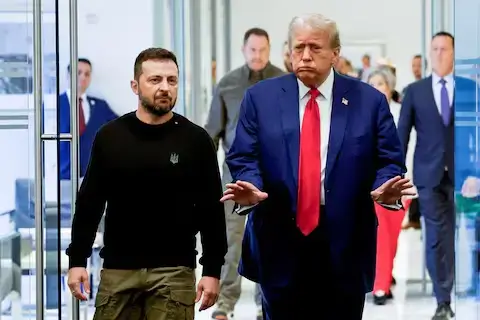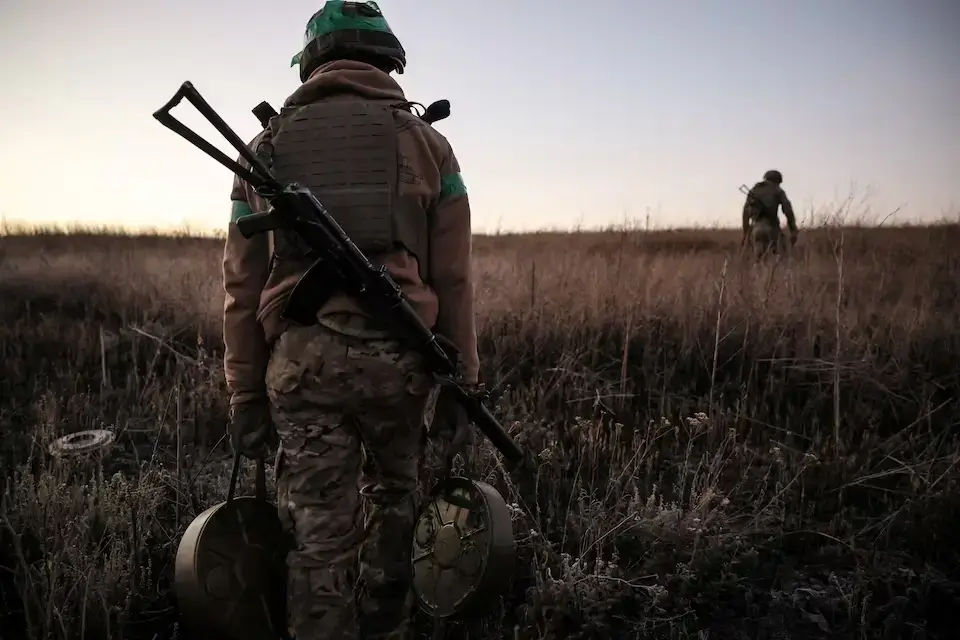Key Proposal Elements in Trump’s Ukraine Peace Plan
Former President Donald Trump’s advisors have been working on a quarrelsome peace plan to put a stop to the conflict in Ukraine. In order to reach a settlement between Russia and Ukraine, the proposal centres on a number of important political and territorial concessions. The suggested approach consists of:
- giving Russia a sizable portion of Ukraine’s territory.
- excluding Ukraine from consideration for membership in NATO in the future.
- using a combination of pressures and smart incentives to get both sides to the negotiating table.
The plan calls for a significant change in how the West views the situation in Ukraine, with the goal of bringing the war to an end by sacrificing territory and preventing Ukraine from joining Western alliances.
Trump’s Ukraine Peace Plan: A Negotiation Strategy
Two main strategies pressure and incentives are at the core of the Ukraine peace plan. One of the primary strategies is to stop providing military assistance to Ukraine until it consents to engage in talks with Russia. This action may be intended to temporarily erode Ukraine’s determination and force President Volodymyr Zelenskiy to change his steadfast stance on NATO membership.
To preserve leverage against Moscow, the proposal suggests stepping up military assistance for Ukraine in the event that Russia declines to participate in negotiations. The establishment of a demilitarised zone along the existing front lines is another possible result of negotiations. Theoretically, this would lessen the possibility of additional violence and escalation in the area.

Current Territorial Control in Ukraine
As of now, Russia controls significant portions of Ukraine’s territory, which complicates any potential peace negotiations. The current territorial control in Ukraine is as follows:
- Russia has fully seized Crimea since 2014.
- Russia controls approximately 80% of the Donbas region.
- Over 70% of Zaporizhzhia and Kherson regions are under Russian control.
- There are smaller areas of Mykolaiv and Kharkiv regions also controlled by Russian forces.
These occupied territories are key points of contention in any peace talks, with the Ukrainian government seeking to regain them as part of its broader territorial integrity.

Multiple Adviser Perspectives on Ukraine Peace Plan
The peace plan is not a single, unified approach. There are three key advisers to Trump who have proposed slightly different methods for achieving peace in Ukraine:
- Keith Kellogg: Kellogg suggests freezing the current battle lines and offering U.S. security guarantees to Ukraine, ensuring that any future threats are deterred.
- JD Vance: Vance advocates for the establishment of a heavily fortified demilitarized zone, which would serve as a buffer between Russian and Ukrainian forces.
- Richard Grenell: Grenell has proposed the creation of “autonomous zones” in eastern Ukraine, which could give local populations more control over their own governance while remaining within Ukraine’s territorial boundaries.
Challenges to Trump’s Ukraine Peace Plan
Despite its ambitious scope, there are several challenges to the success of Trump’s proposed peace plan for Ukraine. Some of the main obstacles include:
- Putin’s Resistance: Russian President Vladimir Putin may not be willing to negotiate on terms that would significantly alter Russia’s current territorial gains.
- Zelenskiy’s NATO Aspirations: Ukrainian President Zelenskiy has made it clear that NATO membership remains a primary goal for Ukraine, a position that complicates any peace talks that exclude Ukraine from the alliance.
- Congressional Pushback: U.S. Congress could potentially resist any reductions in military aid to Ukraine, especially given bipartisan support for Ukraine in its struggle against Russian aggression.
- European Allies: Ukraine’s European allies may not support any peace plan that involves territorial concessions to Russia, especially if it undermines their own security concerns.
Zelenskiy’s Position on Ukraine Peace Plan
President Zelenskiy has expressed some receptivity to diplomatic options meant to retake the occupied lands, even though he is still committed to Ukraine joining NATO. Given Ukraine’s reliance on Western assistance, his position is probably going to be a crucial consideration in any future negotiations.
Timing and Uncertainty in Trump’s Ukraine Peace Plan
Trump has promised to put an end to the war within 24 hours of taking office if he is reelected. Analysts, however, question if such a quick resolution is feasible. A peace deal is unlikely to be reached anytime soon due to the complexity of the situation and the firmly held stances of both Russia and Ukraine.
Diplomatic Outlook for Trump’s Ukraine Peace Plan
Any peace plan’s ultimate success will depend on direct talks between Zelenskiy, Putin, and Trump. However, the likelihood of a fruitful diplomatic engagement is called into question by Russia’s present lack of urgency to change its position on Ukraine.

